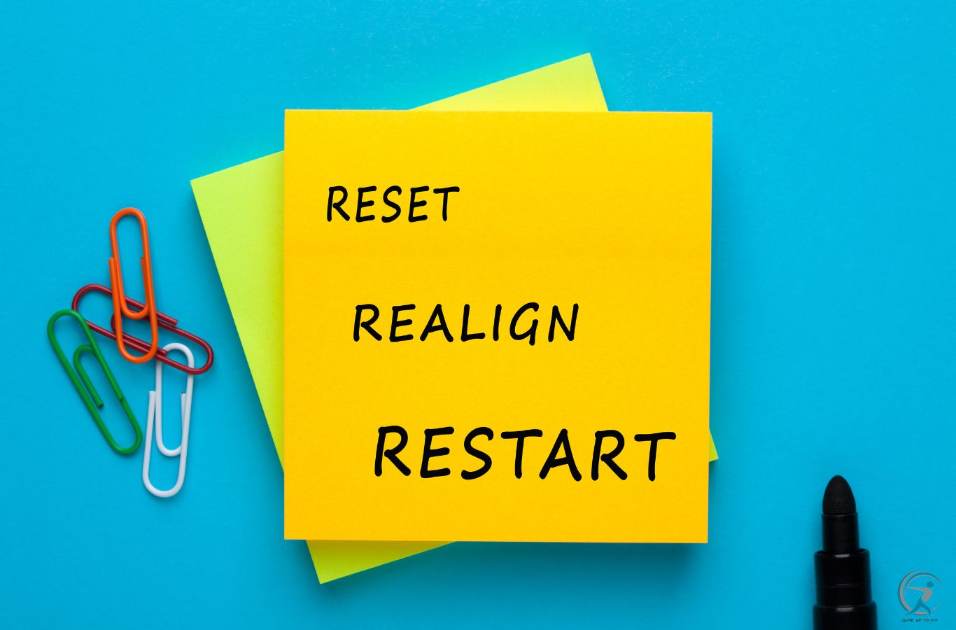Are you struggling to lose weight despite eating less and exercising more? Your metabolism might be the culprit. Follow these five easy steps to boost your weight loss journey and shed stubborn fat quickly.
Understanding Metabolism
Metabolism breaks down nutrients from food into energy. This process is crucial for muscle building. Our bodies prefer using anabolism, which creates new cells. Anabolism is different from catabolism, which breaks down molecules.
You can increase your resting metabolic rate naturally. This rate is the speed at which your body burns calories when at rest. A higher resting metabolic rate helps your body burn fat instead of storing it.

Key Takeaways:
- Reset metabolism with 5 steps for weight and fat loss.
- Prioritize balanced diet, exercise, and sleep.
- Boost metabolism by eating more protein.
- Exercise regularly for weight management.
- Nootropics enhance brain function for motivation.
- Intermittent fasting aids in resetting metabolism.
- Shredded abs workout for toning.
- Focus on HIIT, planks, squats for a toned stomach.
- Stay active for weight management and health.
- Reset metabolism for increased calorie burn.
How to Reset Your Metabolism?
To reset your metabolism, focus on a balanced diet with whole foods. Drink enough water. Exercise regularly. Manage your stress. Get plenty of sleep.
You can’t just “reset” metabolism, but healthy lifestyle changes can help. These changes support natural metabolic functions. They help burn calories and manage weight.
Eat more calories to boost your metabolism. Make sure you eat enough food for your body’s energy needs.
Step One: Eat More To Boost Your Metabolism.

Eating more calories can boost your metabolism. Your body needs food to function well. Cutting calories too much slows down your metabolism and stores fat. Eat three meals and two or three snacks daily. This helps balance hormones and stabilize blood sugar. It prevents hunger and a slower metabolic rate.
Adding protein to your diet helps burn fat and boost metabolism. Protein sources include meat, dairy, eggs, fish, shellfish, beans, and nuts. Stay active to burn calories and avoid a sedentary lifestyle.
Your metabolic rate is the energy your body uses for basic functions like breathing. A higher rate means you burn more energy and can eat more without gaining weight.
For better metabolism, make 20% of your diet protein, from sources like meat and eggs. Protein keeps you full longer. Factors such as genetics, age, weight, gender, and activity level influence metabolism more than eating more.
Diets can help you lose weight quickly. However, they may not be healthy in the long run. Diets can slow down your metabolism. This happens because diets can cause stress and a lack of nutrients.
Exercise regularly to boost metabolism. Aim for 30 minutes of moderate activity five days a week. Burn 500 extra calories daily through activities like tennis or jogging.
Doing nothing will do more harm than good.
To lose weight, you need to do more than eat less.
You need to be active to burn calories. The more active you are, the more calories you’ll burn.
Staying active is crucial if you want to lose weight and keep it off long term.
To keep your current weight, you must keep an active lifestyle.
Your metabolic rate is the speed at which your body burns calories. It helps your body do basic functions like breathing and digesting food. This rate changes based on factors like age, gender, weight, height, and genes.
Your body burns calories all the time, even when you breathe and digest food. Physical activities, like running or playing soccer, also burn calories. Mental activities, like thinking, can make you feel tired too.
When you eat fattening foods like ice cream or cake, calories still burn after you finish eating. These foods are rich in calories. They keep you full longer. Balance by eating less fatty, nutritious foods. Good foods help muscles and minds without adding too much weight. No one likes a reason to stay in bed and not wake up early.
The calories your body burns depend on the amount and quality of food you eat. Eating more won’t automatically speed up your metabolism. Many believe this but it’s not true. People trying to lose weight may find this misconception confusing.
There is no proof that eating smaller meals throughout the day boosts your metabolism. However, it could help those who are always hungry to stick to their diets.
The main way to burn calories is by moving and being active. This is key for weight management and boosting metabolism.
You can’t change how fast your body burns calories just by eating more or less. But exercise can impact your metabolic rate. Physical activity is vital for burning calories well.
Exercise helps you lose weight and maintain it. If you’re dieting to lose fat and eating fewer calories, exercise is vital. Your workouts should be intense and long enough to count as “burned” calories. Increasing muscle mass also ups your resting metabolic rate.
We can use this information to our advantage by eating less. But this can be hard. So, making calorie-free drinks that taste good can help. This way, we can enjoy ourselves and burn extra calories without gaining weight from late night pizza.
A high protein diet causes your body to work harder.
Eating a high-protein diet makes your body work harder. It takes longer to digest food. This makes you feel fuller. You burn more calories digesting protein than carbs. Protein also helps build muscle and repair tissue. If you exercise or want to get stronger, protein helps you reach your goals quicker.
Eating more does not always lead to weight loss. But incorporating more protein can help. It makes you feel fuller longer. It slightly boosts your metabolism.
There are no magical foods or diets that instantly help you achieve your goals. It is important to work hard and stay realistic. If eating more protein works for you, keep doing it! Find what fits your lifestyle and stick to it.
Digestion plays a crucial role in the metabolism process.
Digestion is a complex process. It involves multiple organs working together. These organs break down nutrients into smaller pieces. The body can then absorb and use these pieces.
Enter the thermic effect of food. This effect shows how much energy your body uses to digest certain foods.
Step Two: Exercise To Reset Your Metabolism

Do you feel sluggish even when you exercise? Regular exercise is crucial for boosting your metabolism and managing weight. Aim for 30 minutes of moderate activity five days a week. To maximize benefits, vary your activities every few months and incorporate both cardio and strength training.
To get the most benefits from exercise, change your activities every few months. This boosts your metabolism. Your body will learn to burn fat instead of storing it. Remember, exercise alone isn’t enough. You also need to eat right. Fuel up with food before and after your workout. Eat during workouts if you can.
Exercise can be a powerful tool to jumpstart your metabolism, but it isn’t the only way. There are other ways to improve your metabolism and boost your energy levels. Here are some of our favorite strategies:
Get enough sleep.
Sleep deprivation makes you feel sluggish. You might feel tired all day long. It can also lead to obesity and diabetes. Obesity means carrying too much body fat. Diabetes is a condition where the body can’t manage sugar levels properly.
Both conditions cause weight gain and low energy levels. If you have trouble falling asleep or staying asleep, try melatonin. Melatonin is a hormone that helps regulate sleep. Take it about an hour before bedtime for better sleep.
Cut back on sugar and processed carbs.
Eating foods with added sugar and refined carbs can leave you feeling hungry soon after. This is because they usually have less fiber compared to whole foods, and don’t keep you as full. Choose whole grains like oatmeal and brown rice. Also, eat fruits, vegetables, and beans, like lentils and chickpeas. These have more nutrients than foods with added sugars or processed carbs.
Drink more water.
Water helps keep your body hydrated. This allows your body to function properly. One of these functions is burning calories more efficiently. Drinking enough water also helps remove toxins from your system. Toxins are harmful substances that can slow down your weight loss.
Step Three: Get a Shredded Abs Workout

A high-intensity workout for your whole body can help you achieve those coveted six-pack abs. This routine uses heavyweights like dumbbells. It also includes bodyweight exercises. These workouts burn extra calories and reduce fat.
You can’t eat your way to a six-pack, but you can exercise to get one. A shredded core means strong and defined abs, obliques, and back muscles.
The key is to do both cardio and strength training. Cardio exercises burn fat and prevent losing muscle. Strength training builds lean muscle. This increases your body’s metabolism. A higher metabolism means you burn calories more efficiently, even when resting.
Here are five workouts that will help you get a shredded stomach:
1. Pilates Mat Workout
The Pilates Mat Workout is excellent for beginners aiming for a flat stomach. It builds strength in your core muscles and increases flexibility in your hips and lower back. Additionally, this workout helps you breathe correctly during exercise. Proper breathing is crucial for weight loss. Incorrect breathing can lead to tension in the upper body, hindering your ability to lose weight.
2. Tabata Interval Training
Tabata Interval Training entails 20 seconds of high-intensity exercise with 10 seconds of rest, repeated eight times over four minutes. It effectively boosts metabolism by
3. HIIT
A high-intensity interval training (HIIT) routine helps tone your stomach and burn fat quickly. HIIT workouts are intense but short, alternating between work and rest. This alternation makes your body work harder and burn more calories than low-intensity exercise.
4. Planks
Planks are another great way to work out your core muscles without using any equipment! They work out all of the muscles in your core area, including your abdomen, glutes, hips, and lower back area, and help with posture control too!
5. Squats
Squatting is a great way to strengthen your lower body and core muscles, including obliques and transverse abdominis.
Step Four: Nootropics to Reset Your Brain’s Motivation Circuitry

Imagine your brain is like a computer. To regain control of your body, you must first reset your brain’s motivation system. You can do this with nootropics or supplements. These enhance functions related to neurotransmitters like serotonin, dopamine, norepinephrine, and acetylcholine.
These supplements can boost your motivation and focus, potentially aiding in your weight loss journey.
How Nootropics Reset Your Optimal Reward Circuitry For Increased Motivation
L-tyrosine is needed by your brain to make dopamine. This gives you more drive, motivation, and ambition. Dopamine is a crucial neurotransmitter. It helps send signals between neurons and controls your mood and motivation. Low dopamine levels can cause depression symptoms. If you can’t focus or lack a sense of purpose, you might not have enough energy to make dopamine.
Nootropics like L-tyrosine ensure you have the necessary raw materials. This helps you make the dopamine you need for focus and motivation. Taking L-tyrosine before a project or something new can boost your performance. It makes you feel ready for anything and good about your achievements.
Step Five: Reset Your Thirst Mechanism and Rebalance Your Body

Your body craves sugar as its main energy source, signaling with increased thirst. A good thirst mechanism prevents you from drinking excessively without feeling hungry. Eat whole foods like fruits, vegetables, lean proteins, and healthy fats to lose stubborn fat.
During meals, eat until satisfied. Ask: Am I still hungry? Do I want more? Do I feel stuffed? If not hungry, it’s good for weight loss. Watch your drinks; diet soda can lower your metabolic rate by up to 16 percent.
Intermittent fasting is a great way to reset your metabolism.
Intermittent fasting is an effective strategy for resetting your metabolism. It can help burn fat, boost energy, improve health, and aid in weight loss by making you feel full with less food. Fasting also shifts energy use from carbs to fat, potentially lowering the risk of diabetes and heart disease.
Fasting raises brain-derived neurotrophic factor (BDNF). BDNF enhances memory. Fasting lowers the risk of Alzheimer’s and Parkinson’s diseases. It does this through improved autophagy. Autophagy is a process where cells clean out old parts.
Reset your metabolism and achieve a healthy metabolism
Resetting your metabolism is key to achieving your weight loss goals. By implementing these steps, including a balanced diet, regular exercise, and strategies like intermittent fasting, you can boost your metabolism, lose stubborn fat, and become a healthier you.
Conclusion
Resetting your metabolism is key to achieving your weight loss goals. By implementing these steps, including a balanced diet, regular exercise, and strategies like intermittent fasting, you can boost your metabolism, lose stubborn fat, and become a healthier you.
Are you ready to take charge of your health? Start today and reset your metabolism. Implement these steps, kickstart your weight loss journey, and achieve long-lasting results.
Embrace the challenge, prioritize your well-being, and watch your body transform. Your journey to a healthier lifestyle begins now!
Resources
- National Institute of Diabetes and Digestive and Kidney Diseases (NIDDK) https://www.niddk.nih.gov/health-information/weight-management
- Mayo Clinic https://www.mayoclinic.org/healthy-lifestyle/weight-loss/basics/weightloss-basics/hlv-20049483
- Harvard Health Publishing (Harvard Medical School) https://www.health.harvard.edu/topics/diet-and-weight-loss
- American Council on Exercise (ACE) https://www.acefitness.org/education-and-resources/lifestyle/blog/category/2/weight-loss/
- Centers for Disease Control and Prevention (CDC) https://www.cdc.gov/healthyweight/index.html